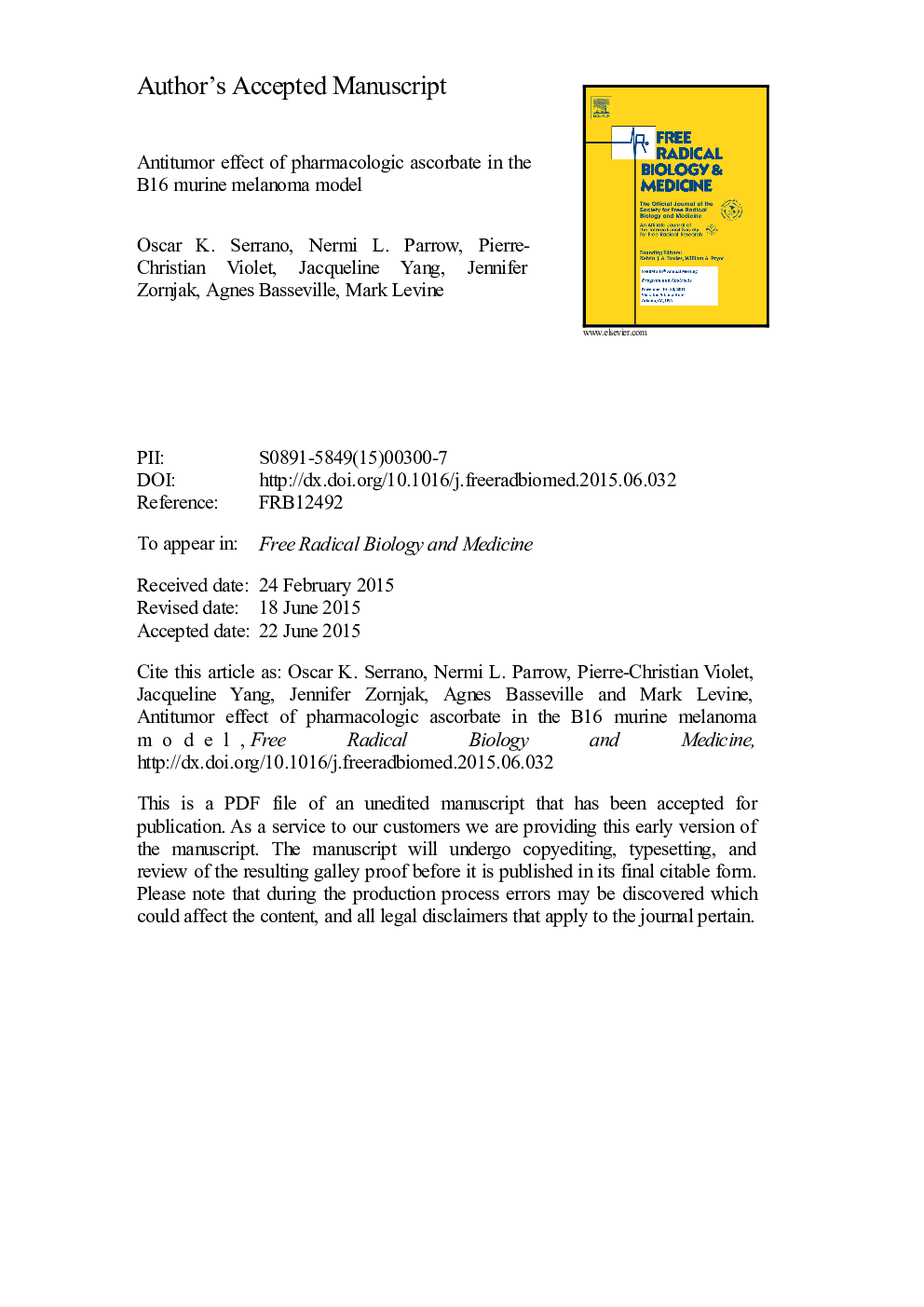| Article ID | Journal | Published Year | Pages | File Type |
|---|---|---|---|---|
| 8268751 | Free Radical Biology and Medicine | 2015 | 46 Pages |
Abstract
Because 5-year survival rates for patients with metastatic melanoma remain below 25%, there is continued need for new therapeutic approaches. For some tumors, pharmacologic ascorbate treatment may have a beneficial antitumor effect and may work synergistically with standard chemotherapeutics. To investigate this possibility in melanoma, we examined the effect of pharmacologic ascorbate on B16-F10 cells. Murine models were employed to compare tumor size following treatment with ascorbate, and the chemotherapeutic agents dacarbazine or valproic acid, alone or in combination with ascorbate. Results indicated that nearly all melanoma cell lines were susceptible to ascorbate-mediated cytotoxicity. Compared to saline controls, pharmacologic ascorbate decreased tumor size in both C57BL/6 (P<0.0001) and NOD-scid tumor bearing mice (P<0.0001). Pharmacologic ascorbate was superior or equivalent to dacarbazine as an antitumor agent. Synergy was not apparent when ascorbate was combined with either dacarbazine or valproic acid; the latter combination may have additional toxicities. Pharmacologic ascorbate induced DNA damage in melanoma cells, as evidenced by increased phosphorylation of the histone variant, H2A.X. Differences were not evident in tumor samples from C57BL/6 mice treated with pharmacologic ascorbate compared to tumors from saline-treated controls. Together, these results suggest that pharmacologic ascorbate has a cytotoxic effect against melanoma that is largely independent of lymphocytic immune functions and that continued investigation of pharmacologic ascorbate in cancer treatment is warranted.
Keywords
DTPAHRPBCAPVDFCDC42LD50NOD-SCIDIgGRPMIFBSD-MEM8-oxo-dGPBSECLATCCRIPA8-oxo-2′-deoxyguanosineDNAHydrogen peroxideAscorbateEDTAEthylenediaminetetraacetic aciddeoxyribonucleic acidimmunoglobulin Gradioimmunoprecipitation assay bufferenhanced chemiluminescencebicinchoninic acidEnzyme-linked immunosorbent assayELISAMelanomaintraperitonealDiethylenetriaminepentaacetic acidCancerfetal bovine serumRoswell Park Memorial InstituteAmerican Type Culture CollectionPhosphate-buffered salineDulbecco’s modified eagle’s mediumNeocuproineH2O2vitamin CHorseradish peroxidasecell division control protein 42ProoxidantPolyvinylidene fluorideHigh pressure liquid chromatographyHPLC
Related Topics
Life Sciences
Biochemistry, Genetics and Molecular Biology
Ageing
Authors
Oscar K. Serrano, Nermi L. Parrow, Pierre-Christian Violet, Jacqueline Yang, Jennifer Zornjak, Agnes Basseville, Mark Levine,
